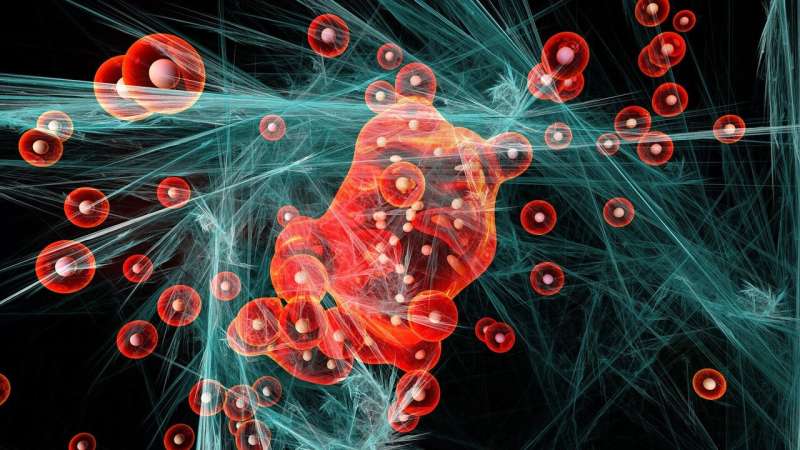Intracellular supramolecular self-assembly regulates cellular function

Supramolecular self-assembly based on noncovalent interactions is considered as a key strategy for introducing intracellular synthetic biocompatible macromolecules. The synthetic macromolecules resemble the nature, behavior, and function of biomacromolecules in living systems.
The in cellulo self-assembled macromolecules can overcome and avoid complicated biological reactions in living cells to enhance feasibility of controlling overall cellular function and behaviors.
Researchers from the Shenzhen Institute of Advanced Technology (SIAT) of the Chinese Academy of Sciences reviewed recent progress in applications and strategies that induced the intracellular supramolecular self-assembly of macromolecules with different topological structures as theranostic nanosystems in the fields of cancer treatment and bioimaging.
The review was published in Angewandte Chemie International Edition on Jan. 17.
The strategies included host-guest interaction, enzyme, pH, temperature, intracellular polymerization, and free radical polymerization induced self-assembly. They were motivated by external stimuli or internal, disordered, and harsh conditions in tumor cells, and were mainly utilized in abstracting the in cellulo biomacromolecules like polyamine, adenosine triphosphate, biolabeling, and bioimaging.
Tumor cells have a disordered environment of the overexpressed pH, reactive oxygen species, and enzymes, which was utilized as a prominent tool inducing in cellulo supramolecular self-assembly. External stimuli like temperature effect, photoinitiation free radical polymerization, and in cellulo harsh conditions introduced synthetic macromolecules with different topological structures like nanoparticles, gel, and coils to induce the bioimaging and the death of cancer cells.
Moreover, the physical liquid-liquid phase separation was utilized to construct the endogenous self-assembled macromolecules called membraneless organelles. These subcellular organelles are used widely to abstract the intracellular biomacromolecules like enzymes to induce cancer death.
The study also reported that molecular tweezers could be used widely in the future. Molecular tweezers are a class of cyclic molecules containing two binding arms to adapt to specific guest molecules, mainly used as a biosensor, synthetic receptor, and drug delivery system for pharmaceutical applications. However, there are few studies for its application in living cells at present.
More information: Mohamed Dergham et al, Supramolecular Self‐assembly in Living Cells, Angewandte Chemie International Edition (2022). DOI: 10.1002/anie.202114267
Journal information: Angewandte Chemie International Edition
Provided by Chinese Academy of Sciences





















